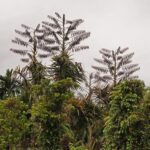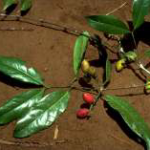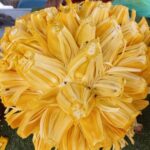Moon mushrooms (Gymnopus sp.) are one group of edible mushrooms found in the forests of Malaysia, and are locally called ‘Jamur bulan’. The other groups of edible mushrooms are colloquially known as wood ear mushrooms, oyster mushrooms, and shiitake mushrooms. This is a stark simplification, on which every mycologist will cringe, but it describes in practical and simple terms which mushrooms can often be eaten.
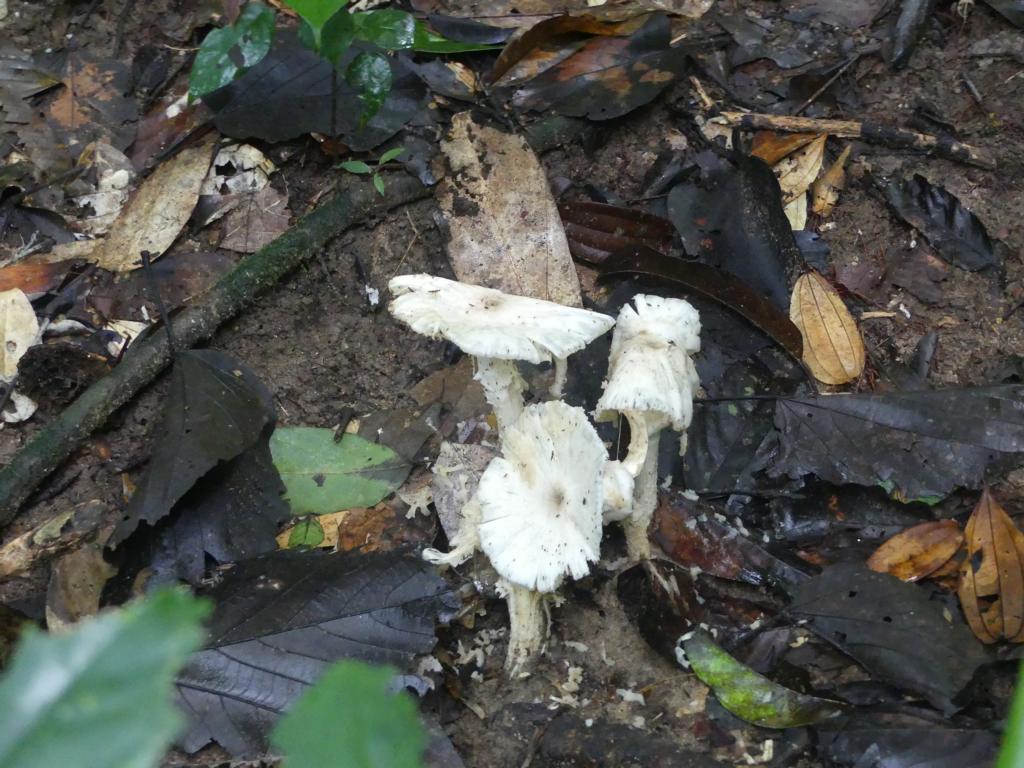
When walking with Orang Asli people of the Jahai tribe in the forests of the Royal Belum State Park in Perak, Malaysia, they showed me these mushrooms as one of their food sources. Although this specific group of mushrooms we found was already in a state of decay, they serve as an example of jungle food. On them, we could also see their ecological role as a food source for insects.
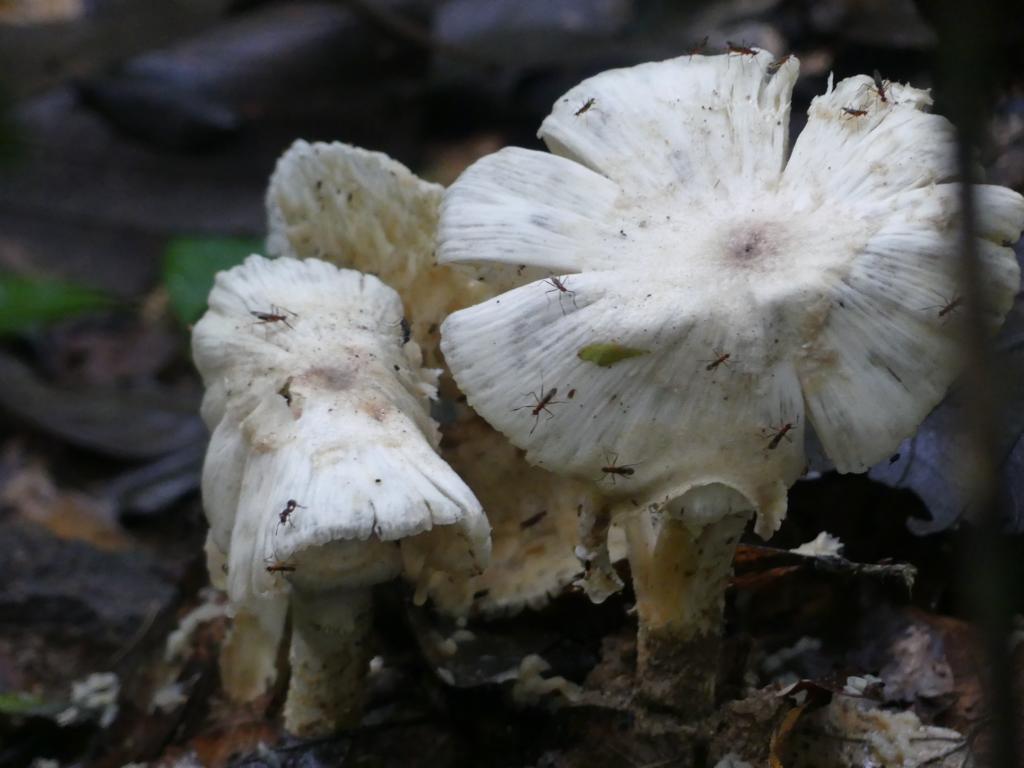
How to identify moon mushrooms?
Mature moon mushrooms can be characterized by their white cap with often a brownish tinge, which are slimy on their upper surfaces and measure between 2 and 10 cm ( ¾ – 4’’) in diameter. Its shape is umbonate, meaning the cap is flat with a knob in the middle, which is darker brown than the surrounding cap. Its margins are called ‘rimmose’, as they are often split into sections. The gills on the underside of the cap are cream or white colored, tightly packed, and extend down to the stem. The stem of mature moon mushrooms is straight, long, slender, and lacks a ring. Its color is paler than the cap, and its texture is dry and fibrous.
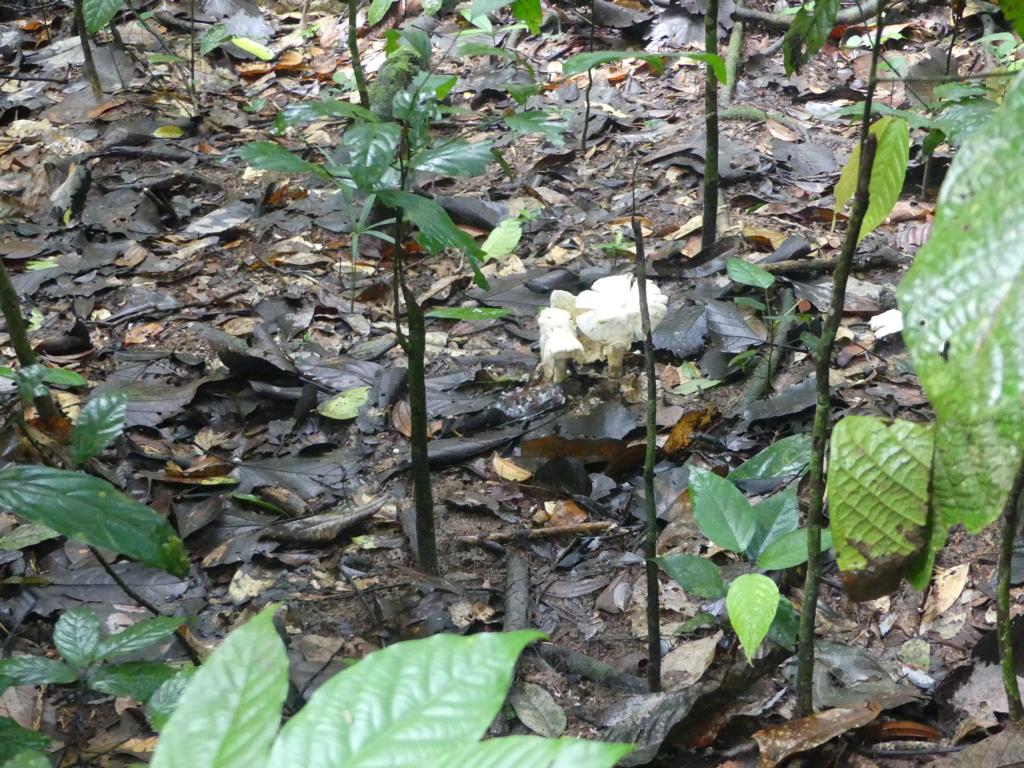
When and where to find them?
Moon mushrooms appear in the rainy season, as they need a highly humid climate to grow. We found them in Perak State at the beginning of December. The best time for collection is early morning, as the mature ones will already start to rot during the day. The mushrooms we saw appeared in moist soil within an opening of the second forest canopy, which had little undergrowth (just some tree seedlings) on the ground and received only partial shade from the first canopy layer above.
How to prepare and cook them.
First, the stem and cap have to be cleaned of soil. Thereafter, the slime on the cap must be removed, either by using a dry cloth or by gently pulling off parts of the cap skin. The cleaned mushrooms are cooked in various ways.
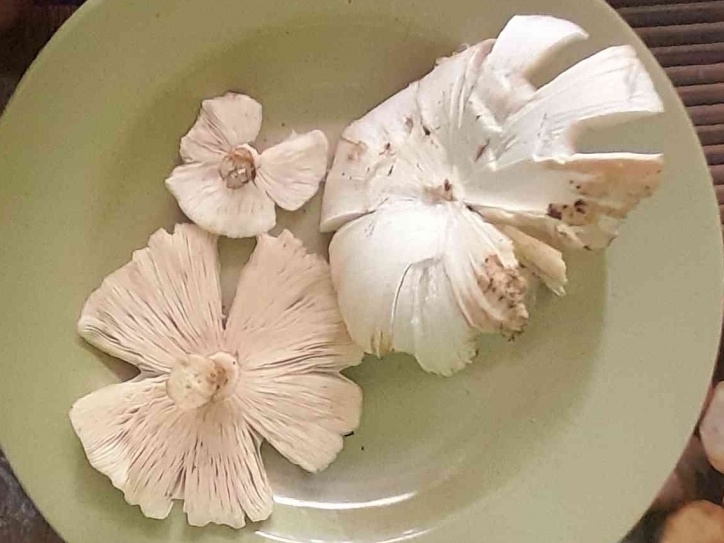
The simplest way is to detach the cap from the stem and briefly grill both over a fire before eating. Or they are steamed in banana leaves. More elaborate cooking methods range from adding chopped mushroom pieces to stews to creating dishes that center around the mushrooms themselves.
Such a recipe involves, for example, briefly (2-3 minutes) grilled mushrooms, which are then chopped and mixed with slices of starfruit, shallots, and chilies. Such a hot-sour-mushroomy tasting salad greatly complements staples, like yams or sweet potatoes, as well as fried fish or grilled meat.
Health benefits and nutritional value.
There are no well-researched nutritional facts about the genus Gymnopus. According to Ria Aprilia, it is known that some species of moon mushrooms possess pharmacological potential, and they may have a possible use in herbal medicine therapies. The only statement by the source, as mentioned above, is the fact that ‘mushrooms are generally known to be rich in antioxidants and bioactive compounds that can help boost the immune system and fight free radicals’.
Poisonous look-alike mushrooms at Royal Belum State Park.
Between 2014 and 2024, there were 200 mushroom poisoning cases in Malaysia. Most of these cases were due to misidentification! Royal Belum’s biodiversity includes toxic species like Entoloma mastoideum (Pink Gill) and Chlorophyllum molybdites (False Parasol), which could be mistaken for Gymnopus. Therefore, wild mushrooms should never be consumed without expert identification.
Pink Gill
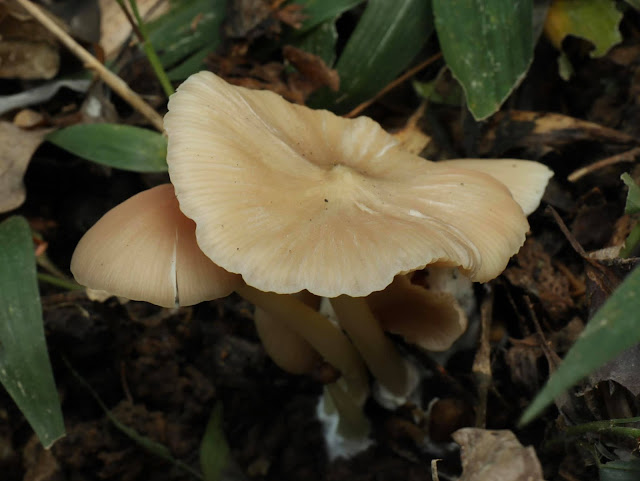
The genus Entoloma is known for having pinkish-colored spores, which is where the common name originates, and Entoloma mastoideum is also commonly referred to by the same name. The species can be recognized by its cap, which does not split into sections, unlike the moon mushrooms.
False Parasol
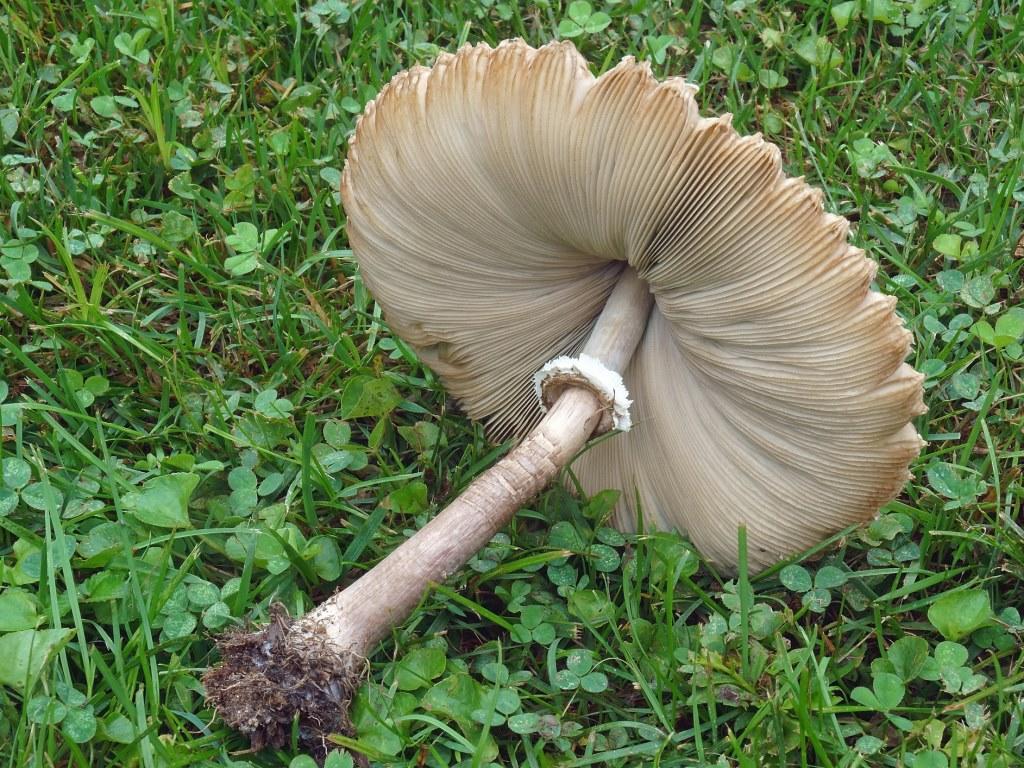
Mainly growing in grassy areas. It is not deadly poisonous, but is also called ‘Vomiter’, which explains its effects. Easy to recognize by its annulus (ring) around the stem.
Disclaimer
The content of this article CANNOT be used as any basis for EATING ANY MUSHROOMS. Some mushrooms can be VERY POISONOUS. Please purchase cultivated mushrooms through regular channels.
Lessons learned about moon mushrooms:
- Moon mushrooms appear during the rainy season on moist ground in the shadows.
- They are easy to recognize by their slimy and white cap, split into sections.
- Jahai Orang Asli people eat them mainly briefly grilled.
- There are at least two other mushroom species at Royal Belum that resemble them and can be confused with them.
.



